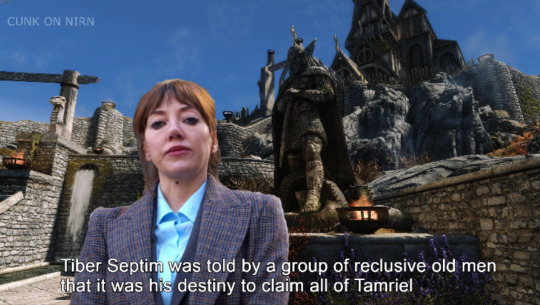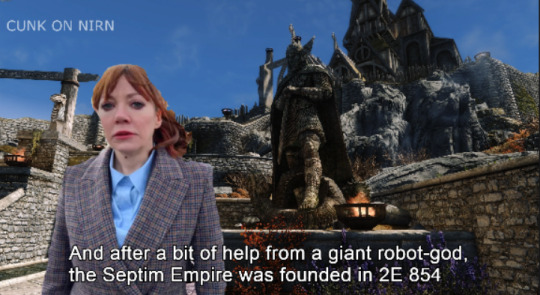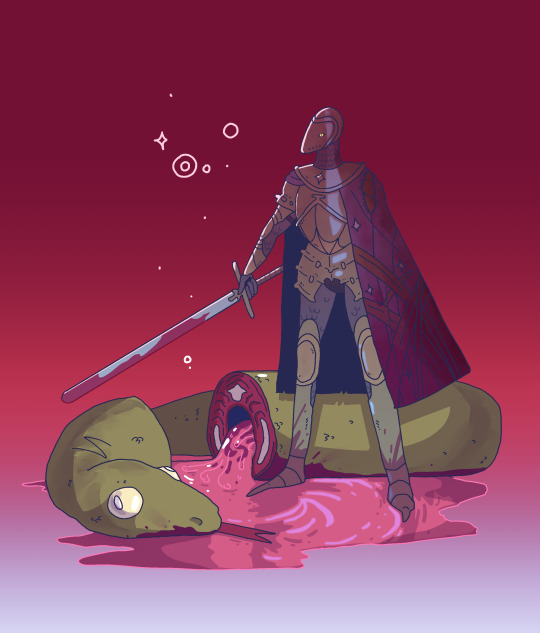#A-4E
Explore tagged Tumblr posts
Video
A-4L-145128-VC2-OCEANA-APR76 by Michel Klaveren
#A-4A#A-4B#A-4C#A-4E#TA-4J#FA-4#A-4F#NARU#NFWS#LEMOORE#ALAMEDA#EL-TORO#NAVY#MARINES#JACKSOVILLE#NEW-ORLEANS#PATUXENT-RIVER#flickr
24 notes
·
View notes
Text



Cunk on Nirn Part 3: I had to this iconic bit
#the elder scrolls#tesblr#skyrim#tes#meme#skyrim meme#philomena cunk#cunk on nirn#the mv is from 1989 the quality is gonna be crap and i just have to accept that#i put pump up the jam release in 4E 189 if anyone cares#1989 vs 189 yeah its close enough for me :P#i gave felly the hat that's how you know its skyrim :P
3K notes
·
View notes
Text

A sunset view of the McDonnell Douglas F-4 Phantom II
#military#aircraft#air force#us air force#usaf#fighter jet#aviation#fighter plane#us navy#plane#jet plane#jet#fighter aircraft#f 4 phantom ii#f 4 phantom#f 4e#sunset#photography#sunset view
418 notes
·
View notes
Text

SB2C-4E Helldivers of Squadron 87 are operating from the USS Ticonderoga in May 1945.
201 notes
·
View notes
Text
Nick clearly wasn’t looking good: his hair was a mess and ze was stumbling and stopping all the time due to the increased back pain. Yet, ze pointlessly wandered around the Aurora with nothing better to do. Part of him hoped he would meet someone. Maybe with a gun.
@caphhhhfgjdkhgjfj-firstmate
114 notes
·
View notes
Text

Been meaning to do a proper portrait of Dana for a while!
Dana was my very first D&D character who became my first Tav as well! She was a 4e Fey pact warlock whose patron was Sehanine Moonbow, so it was an easy switch to Selune.
Her mother was an Elven warrior who was sworn to protect sacred forests of Sehanine/Selune, but she was raised by her father, a wizard, in Baldur's Gate. Despite having no memories of her mother, and her father discouraging her from getting mixed up with deities and magic, Dana was naturally drawn to the moon. After her father's death, she set out to find herself.
She was the perfect Tav for a Shadowheart redemption/romance campaign!
#dnd art#dnd character#selunite tav#selune#dnd 4e#bg3 tav#ttrpg character#fantasy art#fantasy character#moon#character art#my art#my oc
383 notes
·
View notes
Text
turning d&d 4e into a brutal xianxia game
i've always looked at D&D 4e as particularly amenable to the wuxia genre. in fact, it works as a spirit cultivation game. a problem with a lot of 4e (for me at least) is its disconnect of mechanics from the fiction. it is a game-first, player-first game, and that's a great genre in itself. but this post is looking at 4e through potential diegetic lens, with each game mechanic justified through spirit cultivation xianxia genre

as follows:
XP as Cultivation: exp serves great as cultivation. leveling up serves as cultivation progress. the three tiers work as "Man -> Earth -> Heaven" kinds of Cultivation Realm.
Powers as Techniques: each power works as a martial art technique that can be learned and mastered. this works better using the Alternative Rewards system found in the DMG, and getting powers from the world instead of getting it immediately on level up.
emphasize alternative rewards: instead of purely making level-ups the main way to get powers, have the powers be found in the world as alternative rewards. have them be of differing levels. if they find a level 14 fighter power from learning it from a bull God, they need to be a Level 14 PC with a Fighter Feat to be able to "equip" it.

Classes as Martial Arts schools: Fighters as the Fighter Sect, Wizards as the Eight School Magics Sect, etc. Subclasses or the Build Options work as School Specializations. this is the one that is least wuxia-esque to me, because wuxia is an inherently classless idea. you should be able to learn a strand of martial arts from one master and then learn a completely new and different one from another master that chooses to pick you up on.
every pc from a different school: to bridge this genre gap, when you make a PC, write the class they choose as a martial school. even if two PCs are two Sorcerers, they must come from different but perhaps similar schools. maybe one is from the Tantric Deity Sect and the other is from the Nine-Elements Yang Sect
Healing Surges as Qi: Qi is the breath or the life force. Similar ideas in other cultures are prana, ginhawa, ki, and kebatinan. You can only heal yourself as much as your inner reserves can heal you. If your Qi is tapped out, even healing potions will have a muted effect
Hit Points as Hit Protection: this one is stealing from NSR ideas. replace hit points with the idea of Hit Protection. Fighting in Wuxia/Xianxia etc. is a flurrious exchange of blows. when attacking a character, as long as they're not bloodied, they're actively fighting back, defending according to the targeted defense (blocking, parrying, ducking, weaving with AC, dodging and leaping with Reflex, resisting with Will, etc.) Hit Protection still includes personal vigor, which justifies attacks that poison or set them on fire as those attacks probably hit home to transmit those effects

xianxia lethality: xianxia and wuxia are surprisingly more brutal than one would think. it's bloody and arms are broken, legs are cut off. we move into homebrew-y territory here.
half HP, double damage: lean into this. power comes not from numbers but from techniques and traits for PCs. half HP and double damage not just for monsters, but for PCs as well. this will make fights less meat sack slogs and into tense, explosive engages.
move attack hit rate from 60% to 90%: this is something fft did well. most attacks have a 100% starting hit rate. enemy evasion values shifts that around. my idea is to raise attack hit rate to much higher. this makes defense-raising options much stronger as well and every attack becomes an important additional strike
make bloodied more potent: bloodied inflicts an injury. make this fiction oriented: a good enough attack might scar your face, or might render your arm useless and make you suffer disadvantage. this might not feel fun, but it will force creativity and the players must respect the world

improvisation: in wuxia and xianxia you actually will see more instances of the heroes using their environment to affect the outcome of the battle. throwing tables to distract, using roofs to provide cover, etc. here we move again into homebrew territory:
improvisation as default. this one is a large shift in the game. get rid of action economy. get rid of action types. you can move and do one thing. this is anything. most commonly it will be an attack. this includes even minor actions. there are no set actions you can do, no list to choose from. use your imagination. lean into the p 42 of the DMG. turn THAT into the core mechanic of the game
use essentials rules: this one is the least controversial but 4e essentials rules are the best consolidation of the rules. especially the item rarity stuff.
dare to be unbalanced: 4e's neo-golden cow is balance. don't care about the balancing. xianxia thrives on the unbalancedness of things to create tension and friction. the need to have revenge on a martial master that killed your master before, but they are a Level 28 Fighter and you're a measly Level 3 Wizard. You have to cultivate to get up to his level. You need 10,000 more years of training to get to him! now there's a reason for adventuring (collecting training manuals, finding masters, finding cultivation cores to gain XP). adopt an OSR mindset. become world-first: make the PCs rise to the challenge instead of tailoring everything to them. if they move into an area with level 8 monsters, they can choose to take those on, or just go back and go somewhere else, return at a later time when they have better equipment and better weaponry.
96 notes
·
View notes
Text
4e: The Pinball Wizard
Back in the heydays of the 4th edition community being a community that all met on a single forum and shared a common lexicon and all that, there were phrases, truisms, slang and tropes we recognised and used to speed our way through conversations. This was true of 3rd edition too, since the community was actually, broadly speaking, the same thing, but that community kind of uprooted itself and moved on to other places, while the 4th edition remnant seems to have not really coalesced in a subsequent form. We don’t really have a 1d4chan or Brilliant Gameologists or deeply intimidating Pathfinder Subreddit as places to scare people off, and instead it’s stuff like…
Well, this blog post might get shared on the subreddit. Hi reddit! I like you even if we don’t agree about Blackguards!
Anyway, thing is, there are things that now have no meaning except their place in 4th edition conversations, and are functionally un-googleable because they’re very generic ways of just using words, or maybe, were named after something else. Back in City of Heroes there was a powerful supergroup known as the Green Machine, that was entirely team-buffing healers that refused to heal, and that’s not a term you can search for meaningfully. Another group that existed and that shares its title with today’s subject was a group of kinetics, where everyone could use powers to make everyone else fire off at super speed, showing you don’t need good powers if you can fire off your best powers every second.
They called themselves the Pinball Wizards, and now, if you go look for what that means in 4th edition D&D you kinda find nothing.
Here’s the story of one of the more distinct power level errata of D&D 4th edition, where in 2011, a single sweeping change to the way the rules worked destroyed a strategy and in the process brought something ridiculous down to merely really good.
This build was a combination of two basic parts, which were well and strictly defined under 4th edition rules. The first is zones. A zone is an effect, made by a power with the ‘zone’ keyword so you knew where to look for it, that looks at that area for some reason. Some zones are used for things like a healing aura, or a space that a character can move around in freely, but very commonly, a zone is used to represent an effect that’s bad that lasts. This can be a bunch of falling shards of glass, a cloud of toxic venom that hovers in a space, or a ground teeming with sharp, jagged vines on thorns.
Zones are extremely cool, make no mistake, and they tend to fall into the toolkit of the Controller. Controllers want to deprive enemies of actions, and zones are a great way to give enemies a bad choice: Stay in an area to do something they want to do, or spend actions getting out of it. Since zones do a good job of representing effects like rings of fire, or clouds of poison, or raining ice, it’s stuff that hits the wizardy feeling of editions past.
The other part of this is forced movement. 4th edition had a family of these effects known by their more specific names of push pull slide, but these are ways to change where enemies are positioned and everyone who complains about fighters in 4th edition is usually complaining about these and they are cowards. These effects show up everywhere, but undeniably, if you’re looking at the people who will do the most of them, you want controllers.
The build that worked out of this was known as the Pinball Wizard. You played a Wizard who used one of a number of long-lasting powers that created a zone that did something dangerous when someone entered it. Then you used your other powers to slide something in and out of that zone over and over again. Wizards got more than a few powers that did slides, and they got access to items and feats that improved their slides. You could use a slide effect to turn two squares of slide movement (and we’re talking like, 4-8 squares for builds that are trying) into like, 40 damage.
At level 2, when tanks are happy to have 40 hit points.
Anyway, you might be thinking the sensible solution is to make it so that these zone powers are limited in how often they can have their effect – and it kinda makes sense, narratively, in the context of the world, right? Like, an enemy or person isn’t going to breathe more if they run back and forth through a poison cloud.
In 2011, Wizards released an update to the compendium that added that rules information to every single damaging zone power in the game, with a note of the when, and an article explaining why they did it. It was a perfectly reasonable rules update made through a digital system they had and realistically speaking, the only thing to mourn is that there’s now no good reason to ever let a player get away with this use of these powers together, because it’s pretty silly.
The system that was left after this change was obviously a better system. It had a clear, specific template that it could use thereafter and while it did lose some edge cases, it was implemented thoroughly and comprehensively in a way 3rd edition almost never managed to execute. This was because of a central control system, the compendium, but it also spoke to a problem that a game normally about disconnecting and engaging with a very material play space was going to have to confront head-on.
Basically: This kind of errata existed in the rules, sure, and if you download a rules compendium, every power that can be changed mentions the 2011 change. But the books don’t. The books still have the rules change and to learn how the game works, you have to know it. Or you have to use a digital compendium, which presents a new problem for a game that is meant to work with paper and dice.
These were inevitable evolutions of technology and they interest me because they kinda present problems and solutions at scale. The actual problem of a wizard stacking a bunch of redundant effects together to kick an enemy through the boundary of their zones as a single incident was not a meaningful problem to a table. If it’s a problem, it’s a problem that has an administrative option to work with – the Dungeonmaster can look at it, and decide it’s too good and talk to the players about it. That problem is solvable almost instantly if everyone in the group and game has a good relationship and respects the DM.
But if you made the game, you don’t have a problem that can be solved on the spot. You have a problem of all the players, in a communal space, who bring it up and ask if it makes sense and consult with one another and now you have the problem that looks like at scale your product has a flaw and you need to address it to make that flaw not look like you don’t know what you’re talking about. Oh, what makes a good game is important here, it isn’t not important.
It is neither a good thing nor a bad thing.
It is a thing that few games get, not really, unless they’re very big, and trying to do a lot. It’s barely something that even the next tier down of games need to care about. Errata happens, people care about making the books better. But most people don’t have a comprehensive central database where they can update all the powers that use a particular wording.
Check it out on PRESS.exe to see it with images and links!
86 notes
·
View notes
Text

Ermengard Helvithra, Bane of Serpents
#my art#digital art#fantasy art#art#oc#fantasy#dnd art#high elf#eldritch knight#serpent#dungeons and dragons art#dnd#dungeons and dragon#4e
100 notes
·
View notes
Text

Sahuagin
Art for Monster Manual 4e Art Gallery
Art by Daren Bader
36 notes
·
View notes
Video
A-4E-149666-VF126-MIRAMAR-DEC92 by Michel Klaveren
#A-4A#A-4B#A-4C#A-4E#TA-4J#FA-4#A-4F#NARU#NFWS#LEMOORE#ALAMEDA#EL-TORO#NAVY#MARINES#JACKSOVILLE#NEW-ORLEANS#PATUXENT-RIVER#flickr
16 notes
·
View notes
Text

after having a dunmersona since high school im finally debuting them here. hi every1 this is avati yoya but they go by yoya. hails from a fairly minor house whose prominent members mostly just serve as right-hands and consultants for the great houses but the ones in "the know" are pretty much all involved in the thievery business. if you hire them it's referrals only if you're not a returning customer! gotta stay on the DL yanno
will steal from people and properties, plant stolen objects incriminatingly, pickpocket a noble, anything involving it with as little murder as possible really. NOT a fence tho but they'll give a referral to one of their cousins.
full body ref under the cut :P

the toga scarf thing was a spur of the moment decision lol i just love drape-y flowy fabric on a character design. gives a nice silhouette. also functional when they need something swaddled. yea they've stolen a baby before once bc it was too late for them to break the contract. now it's explicitly stated in it they will NOT STEAL BABIES. not a baby snatcher f'lah get another fetcher for that (the baby was fine don't worry a noble wanted to use that baby as a(n unharmed) hostage to grind the gears of another noble. classic house drama. yknow).
#this is actually an AU of them being in 3rd era morrowind. theyre originally from 4e and lived in bravil the asshole of cyrodiil#this mf is 4''11 bc theyre based off me. okay. i know im a speck of dust. i bite ankles sure#my art#tes#dunmer#dark elf#the elder scrolls#morrowind#tes oc#psychicism
61 notes
·
View notes
Text
🇹🇷🔥 Turkish Air Force - F-4E 2020 Terminator
The F-4E 2020 Terminator represents a significant leap forward in the capabilities of the Turkish Air Force. This comprehensive upgrade enhances the venerable F-4E Phantom II with modern Turkish-made weapons systems, showcasing Türkiye’s commitment to self-reliance and advanced military technology.
Background
With a storied history dating back to the 1960s, the F-4E Phantom II has been a pivotal player on the global stage of air combat. Serving multiple nations and seeing numerous conflicts, the Phantom carved out its place in aviation history as a versatile and rugged aircraft. Türkiye’s decision to upgrade this aircraft stems from a strategic imperative to leverage existing assets while infusing them with cutting-edge technology to maintain relevance in modern aerial warfare. The 2020 Terminator program is the Turkish Air Force’s ambitious initiative to retrofit these fighters with state-of-the-art systems.
Strategic Importance
The ability to exert air superiority and conduct precision strikes is paramount in a region marked by dynamic security challenges. The F-4E 2020 Terminator’s enhanced capabilities contribute significantly to deterrence, and the demonstration of Türkiye’s advancing aerospace industry serves both a strategic and diplomatic purpose.
Upgrade Overview
The 2020 Terminator upgrade, realized by Turkish Aerospace Industries in collaboration with ASELSAN, constitutes a multifaceted improvement over the aircraft’s original design. It touches every aspect of the aircraft’s systems, bringing its avionics, armaments, and electronic warfare systems into the 21st century.
Avionics:
The modernized multi-mode pulse Doppler radar extends the aircraft’s detection range, allowing it to lock onto and engage targets from greater distances. Integrating a Hands-On Throttle-And-Stick (HOTAS) system enhances pilot control, minimizing response time during high-stakes manoeuvres. Color Multifunctional Displays (MFDs) replace outdated gauges, providing pilots with real-time data visualization for improved situational awareness.
Armament:
The Terminator’s weapons suite has been revolutionized with a mixture of Western and indigenous munitions. Long-standing armaments like the AIM-9X Sidewinder are joined by Türkiye’s own precision-guided munitions, such as the SOM cruise missile, capable of striking strategic land and sea targets with formidable accuracy. The UAV-230, a domestic innovation, represents the pinnacle of Türkiye’s missile development, offering supersonic ballistic delivery of a range of warhead types over substantial distances. The BOZOK, MAM-C, MAM-L, and Cirit missiles exemplify Türkiye’s expertise in laser guidance and smart munition technology, enabling the Terminator to engage and defeat a broad spectrum of target profiles with unerring precision.
Electronic Warfare:
To contend with the contemporary battlefield’s electronic warfare environment, the F-4E 2020 Terminator incorporates an advanced Electronic Support Measures (ESM) system for rapid threat identification and an Electronic Countermeasures (ECM) suite to confound hostile tracking systems. Moreover, chaff and flare dispensers have been integrated to provide decoys against incoming missile threats, enhancing the aircraft’s survivability in hostile airspace.
Operational Capability:
The F-4E Phantom II, transformed by these integrated systems, emerges as a multirole platform capable of dominating beyond-visual-range air-to-air engagements and precision ground-attack missions. It can operate in complex electronic warfare environments and deliver various ordnances based on mission requirements, making it a flexible asset in the Türkiye Air Force’s inventory.
Significance:
The F-4E 2020 Terminator project is a hallmark of Türkiye’s aerospace ambition and its push toward defence autonomy. By retrofitting and modernizing its Phantoms, Türkiye maximizes the value of its existing fleet while also establishing a foundation for future indigenous aircraft development projects.
Munitions Details:
The advanced, indigenous Turkish weaponry integrated into the F-4E 2020 Terminator underlines a significant shift toward self-reliance in defence technologies. Each munition type brings unique capabilities that enhance the platform’s lethality:
UAV-230: A domestically-developed ballistic missile, this supersonic weapon delivers high-precision strikes at long ranges, challenging enemy defences with its speed and reduced radar cross-section.
BOZOK: The versatility of this laser-guided munition makes it ideal for engaging both stationary and moving targets with high precision, ideal for close air support.
MAM-C/L: These smart micro munitions are designed for tactical flexibility, allowing for precision targeting in complex engagement scenarios, from anti-armour operations to counter-insurgency roles.
Cirit: A highly accurate laser-guided missile system designed for low collateral damage, Cirit is adept at striking soft and lightly armoured targets with pinpoint accuracy.
SAGE Munitions: TUBITAK SAGE, Türkiye’s leading defence research and development institute, has contributed a range of munitions enhancing the Terminator’s operational capabilities across various domains.
Conclusion:
The upgraded F-4E 2020 Terminator is a testament to Türkiye’s determination to retain a competitive edge in aerospace and defence technologies. The integration of modern avionics, armaments, and electronic warfare capabilities ensures the aircraft’s continued relevance in modern air combat, and its presence in the skies serves as a deterrent in a strategically complex region.
#turkish army#turkish armed forces#turkish air force#turkishnavy#turkish navy#turkish#military#aircraft#air force#fighter jet#aviation#fighter plane#plane#airplane#military aviation#military aircraft#f 4 phantom ii#f 4 phantom#f 4e
130 notes
·
View notes
Text

McDonnell Douglas F-4E
176 notes
·
View notes
Text
Nick woke up a bit after Gunpowder Tim left. His hand was still burning in pain and bandages clearly needed to be changed, but mostly it was the pain. Bandages were an easy task for any medical student, even if they didn't practice for a long time. But getting rid of the pain from a bullet hole... Definitely something not achievable with just gauze and antiseptic.
Master at arms did suggest going to Mar-.. Baron Marius Von Raum, what looked like the only hopeful way right now. Some food would probably be good too but it might be better to ask for that after getting something done with the wound.
Doctor it was then.
Nick had no clue where exactly he could be but hoped that he'd find his quarters earlier than ze falls from pain and hunger.
Carefully stepping out of the room, ze saw a dried pool of blood and bullets, deciding he'll deal with it later and that it would be a good indicator of the room when ze will try to get back.
@vonraumstherapy
86 notes
·
View notes
Text
NSFT Josh? NSFT Josh...
#or at least that's what we're drawing today#Josh circa 4E 201#a slightly less stressed Josh?#danger!josh
47 notes
·
View notes